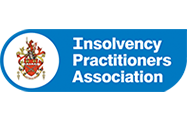It is essential for businesses to learn how to identify if a debtor is stalling. This can help you understand and take the relevant steps and actions necessary.
Getting paid and paying invoices is part of business life. Without the constant circulation of money, everything would stall and fall apart.
There are many ways you can identify whether a debtor is stalling, as well as why they might be delaying an invoice payment.
Why would a debtor want to stall?
There can be several reasons why a debtor would want to stall payments. For some it could be simple human error, which after a chase up or conversation would be solved quickly. In more common cases disputes and unplanned events are the main reason why a debtor stalls their payments.
For disputes the belief is simple: when they have paid they have no power. Withholding an invoice provides them with a sense of power and control over the situation. The more a client disputes an invoice the more likely a business is to cave in and reduce their costs or write the debt off entirely as it can be too much hassle. As a business owner, you do not want to write off debts, you can read about why in our blog.
Unplanned events are just that, unplanned. Some businesses may be working paycheck to paycheck and when an unforeseen event happens it causes mayhem for them financially. A conversation could be all that is needed to help figure out the problem and solution.
What are the most common ways a debtor stalls?
The most common way a debtor stalls a payment is typically through false promises. When your business chases up a late payment, they will typically acknowledge your chaser and promise to pay soon. The vagueness of the response is one of the first signs to look for. If they are unable to specify when they are paying your invoice, you need to be cautious and investigate further.
Another way a debtor could stall is by ignoring the invoice in the first place. This provides them with a cover when things get too serious, as they can claim they never received your invoice. The reasons why someone would use this technique over another, would suggest that something hasn’t gone according to plan and perhaps they are embarrassed to admit that.
How to effectively chase a stalling debtor
The first thing you should do to effectively chase a stalling debtor is to assess how common the delayed payments are.
When you are dealing with a client who continually disputes a payment, ignores your invoices, or provides false promises. You need a robust system in the palace.
The first step is to open up a dialogue with them. Discuss the issues, and try to discover why the late payments, and payment disputes happen on a regular basis. If this is the first time you are having this conversation it can be daunting. We recommend approaching it from a human perspective. Afterall, we are only human.
When you go in too strong it could cause fractures between the working relationship. Be assertive but understanding.
Once you have spoken with the client, ask them to provide you with a solution. This will be a way for you to work out the best course of action between you. You can either agree to their solution, or you can add some of your own requirements. This is the most civil way to approach a stalling debtor.
If your client continues to dispute the invoice, or ignores your payment solutions you can write a late payment letter. We have a blog here on how you can do that. Alternatively, this may be the time you consider working with a debt recovery agency like My Debt Recovery.
Here at My Debt Recovery, we work with you and your client to ensure that all money owed is paid in a timely manner. Working to ensure each person involved is happy with the arrangement and how to process it is important in debt recovery. Contact our team of experts now to see how we can help recover your debts.





